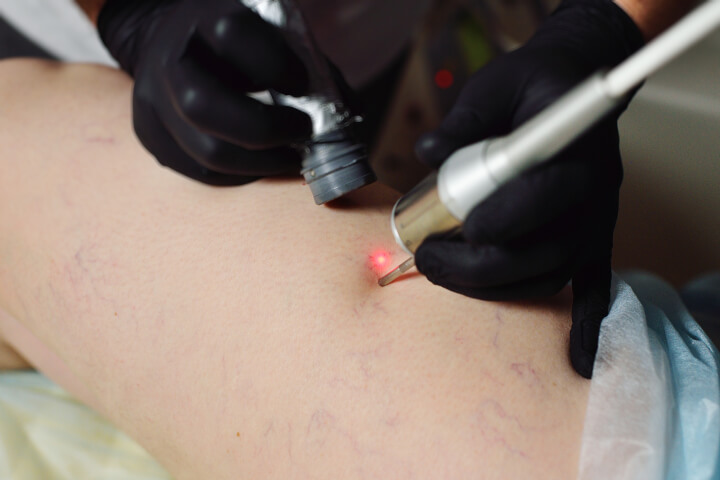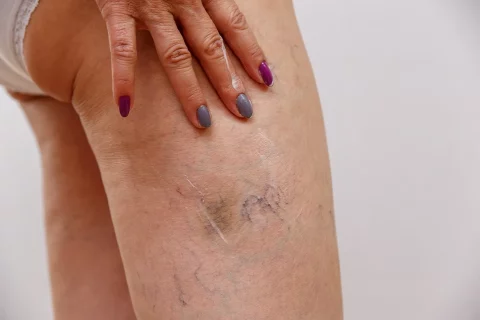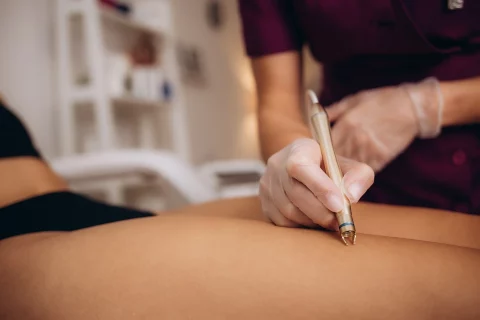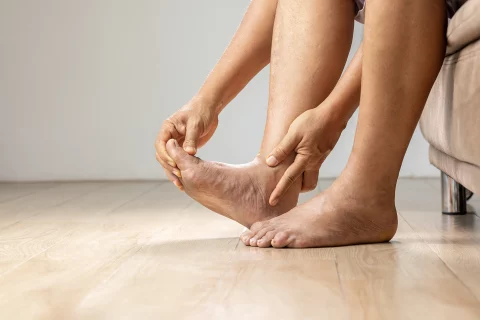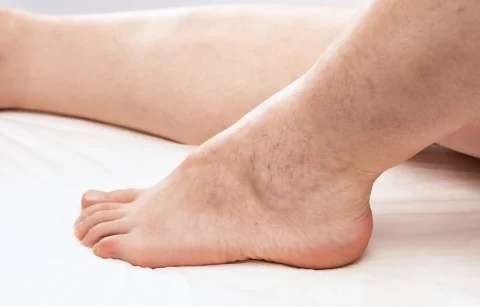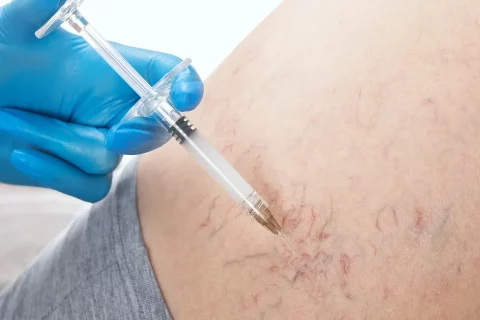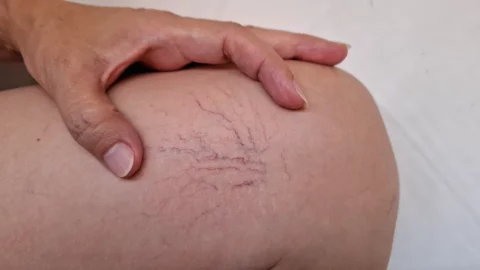Spider veins are a common condition among women and men – the older you get, the more likely you are to develop them. Fortunately, there’s a whole array of vein treatment options that you can use on your spider veins, with many of them offering immediate and long-term results. Laser treatment is one of the preferred options of many patients today, alongside other non-invasive options like sclerotherapy.
So if you get laser treatment for your spider veins, how long will the results stay on your skin – and is there any way to make them permanent? A laser procedure is already particularly effective at giving you immediate results for removing your spider veins, but long-term results are also possible depending on the type of laser treatment that you get. With proper planning, lifestyle changes, and repeat treatments, lasers are a solution that can get rid of your spider veins for good.
Learn More: 4 Positive Effects of Laser Treatments on Eliminating Spider and Varicose Veins
How Do Laser Treatments Work?
Laser treatments use highly focused beams of light to target the veins underneath your skin. The intensity of the laser energy causes your veins to close on themselves with scar tissue, effectively sealing the vein and moving the pooled blood to your larger vein systems. Over time, the treated veins are gradually reabsorbed by your body, and you no longer have to worry about your spider veins in that area.
While it’s easy to think that there’s a universal laser treatment used for getting rid of spider veins, there are actually two types of lasers that are medically cleared for use by a health professional on your skin:
- Surface laser treatments: this form of treatment rarely penetrates more than the sublayer of your skin, and are best used on visible veins on the surface like spider veins.
- Endovenous laser treatment: these lasers work on any deeper vein on the skin or a larger varicose vein, sometimes requiring a catheter for precise sealing of the affected veins.
Unless you’re experiencing severe spider veins or varicose veins, you’ll likely be undergoing a simple surface laser treatment to get rid of your spider veins. However, your healthcare provider will still make the final call about which type of treatment will work best for you, so it’s important to sit down with them and discuss exactly what you need.
Why Are Lasers So Effective On Spider Veins?
Laser treatments don’t remove the vein itself like vein surgery or seal them in with liquid like sclerotherapy – they make the vein close itself from the inside by turning it into scar tissue. It’s a method that relies on the healing capabilities of your body and its capacity to absorb things that are no longer needed, like your treated spider veins. By turning your spider veins into scar tissue, your body ends up absorbing the treated area and pooling the blood to the larger veins where it can move more easily.
Because spider veins form when blood circulation is interrupted by a weak vein wall or aging blood vessels, it can be difficult for most conventional treatments to address spider veins without doing extensive damage to the area. While it’s possible to change your diet and self-manage spider veins with things like compression stockings or compression tights for better blood flow, it’s a procedure like a laser treatment that can have lasting results.
Laser treatments are easy to administer (even for endovenous laser therapy), require little to no downtime, have immediate results, and can be done repeatedly to ensure that no spider veins are left behind in the treated area. Patients can resume their normal activities after the treatment, with minimal recovery time required. Combined with the relative accessibility that most spider vein patients have with this treatment, it’s one of the best ways to manage spider veins.
When Is Laser Treatment Not Permanent?
On average, patients who get laser treatments to manage their spider veins generally report long-term to permanent results. However, there are cases where spider veins may make a comeback to the treated area – though thankfully, they’re less likely to be as severe or as noticeable as the first time.
There are two reasons why this might happen:
Your Body Changes Over Time
Your body is constantly making changes to itself and responding to triggers in your lifestyle, environment, and genetics. This includes vein formation, which can become more complex as you get older. Because the body can form new blood vessels if an existing one is blocked, your spider veins can return if your body undergoes the right conditions for it.
In most cases, this is because your family has a medical history of being prone to developing varicose veins or spider veins. Normally, varicose veins only show up in people who aren’t living a healthy or active lifestyle – but if getting enlarged veins or abnormal veins runs in the family, then you’re likely to get venous insufficiency again even after laser treatments. Fortunately, you can always get lasered again if that happens.
Your Initial Laser Treatment Went Wrong
While one-off laser treatments to get rid of spider lines do happen, patients usually need 2 to 3 sessions before they can officially say that all of their spider veins have been removed. This is because the body can resist the effects of laser treatments, especially for deeper veins located underneath the skin. While this is less likely for spider veins compared to varicose veins, it can and does happen.
A good way to mitigate this is to ensure that you find yourself a professional and experienced cosmetic/healthcare provider who can provide you with long-term treatment. It’s not enough that the veins are removed from the skin surface: larger veins can easily funnel back the pooled blood into nearby veins that weren’t enlarged during treatment.
While these situations can be bothersome to deal with, one of the biggest benefits of getting laser treatments is that there’s no hard limit to how many times you can have them until you get your desired results. However, to get the most out of your time and money, make sure to find a provider skilled enough in the use of laser treatments.
Read More: How Many Laser Treatments Are Needed to Remove Spider Veins?
How Do I Prevent Spider Veins From Forming Again?
Once you’ve removed your spider veins, you should already start to think of ways to prevent them from happening. While on some level never getting spider veins is impossible since they’re one of the by-products of our body getting older, you can significantly reduce your risks of developing them (or at least make their appearance less visible) by following these tips:
Stay Physically Active
Regular exercise – or simply being active – is one of the best ways you can prevent spider vein formation. Spider veins usually form when the blood pools in a part of your venous system, usually because your circulation has either been cut off or become more difficult because of lack of physical activity. It may not sound much, but simply moving around can prevent this from happening, which can reduce your likelihood of getting spider veins.
You don’t have to be a fitness nut and hit the gym all the time either: simply making a few lifestyle changes can be enough to make a difference. Avoid sitting down for long periods, elevate your legs when at rest, simple leg exercises, and taking walks every day can all contribute towards making your veins less likely to develop blood clots that turn them into spider veins.
Make Changes To Your Diet
A healthy diet is always the key to keeping your body in good shape, and that’s even more important with preventing spider veins. There are some foods and vitamins that can improve your blood circulation and vein health, and making sure that you have plenty of these foods in your diet can go a long way towards preventing spider veins from coming back.
You’ll want to be on the lookout for Vitamins B, C, and D – all critical to helping your blood circulation and making your body more efficient at processing blood. If you’re not quite sure where to begin with adjusting your diet, you can always ask a healthcare professional or a vein specialist for more information.
Repeat Your Laser Treatments
In some cases, additional treatment can be your best bet to keep spider veins at bay. While this option should only be considered by older patients, younger patients who know that they’re at the risk of developing spider veins can look into it as well. Because laser treatments are generally non-invasive, they’re a welcome way of preventing a larger vein from splitting into smaller spider veins without having to resort to invasive procedures.
In most cases, it’s less of repeating your laser treatments and just ensuring that you’re consistent with your treatment sessions. As discussed earlier, laser treatments don’t always work in one go, so you must come back when you’re supposed to for the rest of your treatment. This way, your body doesn’t get the chance to undo the effects of your laser treatment, and the rest of your veins can be removed fairly easily.
If you’re really worried about your chances of getting spider veins after laser treatment, feel free to consult your provider about the likelihood that you’ll develop spider veins again. They’ll be able to offer you a more realistic outlook on your veins coming back and can give you personalized advice about the best ways to avoid that situation.
Learn More: What’s the Easiest Way to Get Rid of Spider Veins on the Face?
Get Non-Invasive, Non-Surgical, And Effective Leg Vein Treatment For Spider Veins At Vein Center Doctor Today

Laser treatments for spider veins are some of the most effective ways of getting rid of them, with long-term results that can be potentially permanent. However, because your body produces new cells and changes as you grow older, there’s still a possibility that you’ll get spider veins. Fortunately, there are several things you can do to prevent them from coming back.
Vein Center Doctor has extensive experience in managing different types of venous disease like spider veins and varicose veins with our non-invasive treatments. This allows our patients to get back to their daily activities as soon as possible and helps them overcome the symptoms of their vein conditions without subjecting their bodies to a lot of strain.
Reach out to us today and call 1-862-227-1054.

